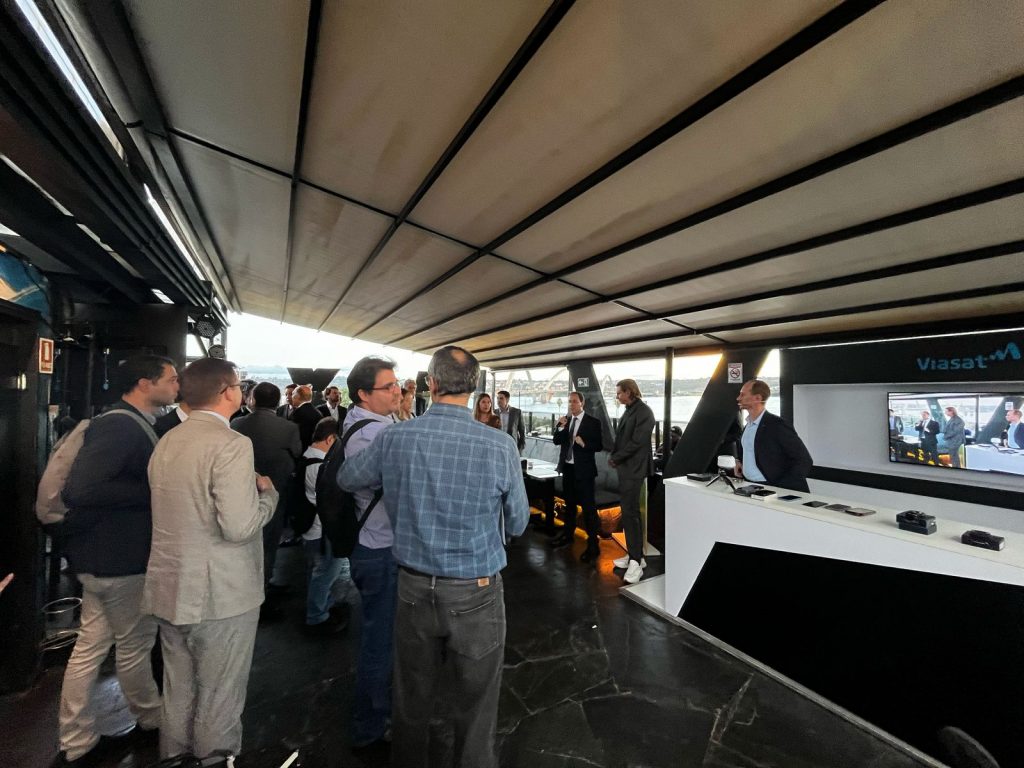Viasat successful D2D demo
April 23, 2025
By Colin Mann

Satellite communications specialist Viasat has successfully performed what it say is the first successful direct-to-handset (D2H) communication test using direct-to-device (D2D) technology in L-band in Brazil.
The demonstration showcased two smartphones connecting directly via satellite using 3GPP NTN standards without the involvement of other terrestrial infrastructure. According to Viasat, his signifies the start of a new age of connectivity in the country where only about 18 per cent of the geographic area is covered by cellular networks, according to Anatel data published in September 2024.
The event, held in the nation’s capital, was attended by officials from Anatel (Brazilian National Telecommunications Agency), and representatives from the government, telecommunications sector, and partners. The demonstration focused on two primary scenarios in which D2D technology was utilised: direct-to-handset communication and data transmission for internet-of-things (IoT) devices in the agricultural and transportation sectors, with plans for expansion into additional markets.
“This demonstration is a significant achievement for connectivity in Brazil,” commented Leandro Gaunszer, General Manager, Viasat Brazil. “It shows that reliable primary satellite communications over smartphones and IoT applications are far more available, opening the door for a future where technology will help build the bridge to the unconnected and make it available to a wider range of individuals and companies, regardless of where they are located. Our extensive L-band coverage and alignment of satellite technologies with 3GPP standards provide a strong foundation for introducing this groundbreaking solution to the country. This will contribute to the development of a more inclusive, interconnected, and effective community and network for both consumers and businesses.”
Viasat notes that the 3GPP Release 17 standard for D2D technology promotes a standardised approach to advancements in a more inclusive and open ecosystem. This enables various vendors and partners to easily adopt the technology with a strong and adaptable solution. With a GSMA Intelligence study suggesting potential global D2D revenues could exceed $30 billion per year by 2035, the large areas of Brazil without terrestrial connectivity represent a significant opportunity for MNOs, OEMs and solution providers.
“The timing of the Viasat demonstration is significant for the industry, showcasing advancements in satellite technology and the company’s dedication to the Brazilian market,” added Andy Kessler, Vice President, Viasat Enterprise. “As Brazil already has access to our services, the implementation of D2D technology and related infrastructure relies on collaborations, and we have made significant progress in our conversations with potential partners.”
Viasat says it plays a key role in advancing open architecture standards-based D2D connectivity as a founding member of the Mobile Satellite Services Association (MSSA), a nonprofit organisation that brings together a wide range of industry players to promote mobile satellite connectivity on a global scale. The company also collaborates with chipset manufacturers and other connectivity providers to help enable D2D technology to become widely available in the coming years.
Other posts by :
- Russian satellite tumbling out of control
- FCC boss praises AST SpaceMobile
- Rakuten makes historic satellite video call
- Rocket Lab confirms D2C ambitions
- Turkey establishes satellite production ecosystem
- Italy joins Germany in IRIS2 alternate thoughts
- Kazakhstan to create museum at Yuri Gagarin launch site
- AST SpaceMobile gets $42 or $1500 price target
- Analyst: GEO bloodbath taking place
